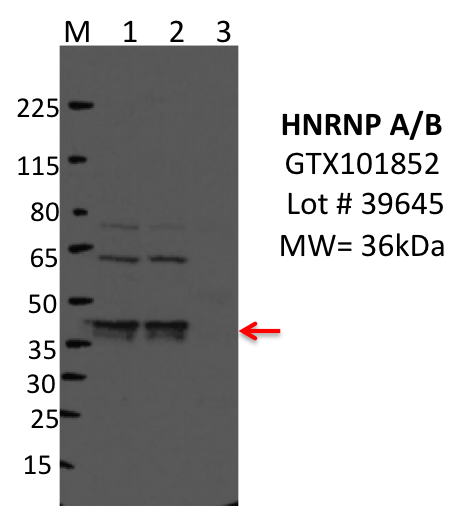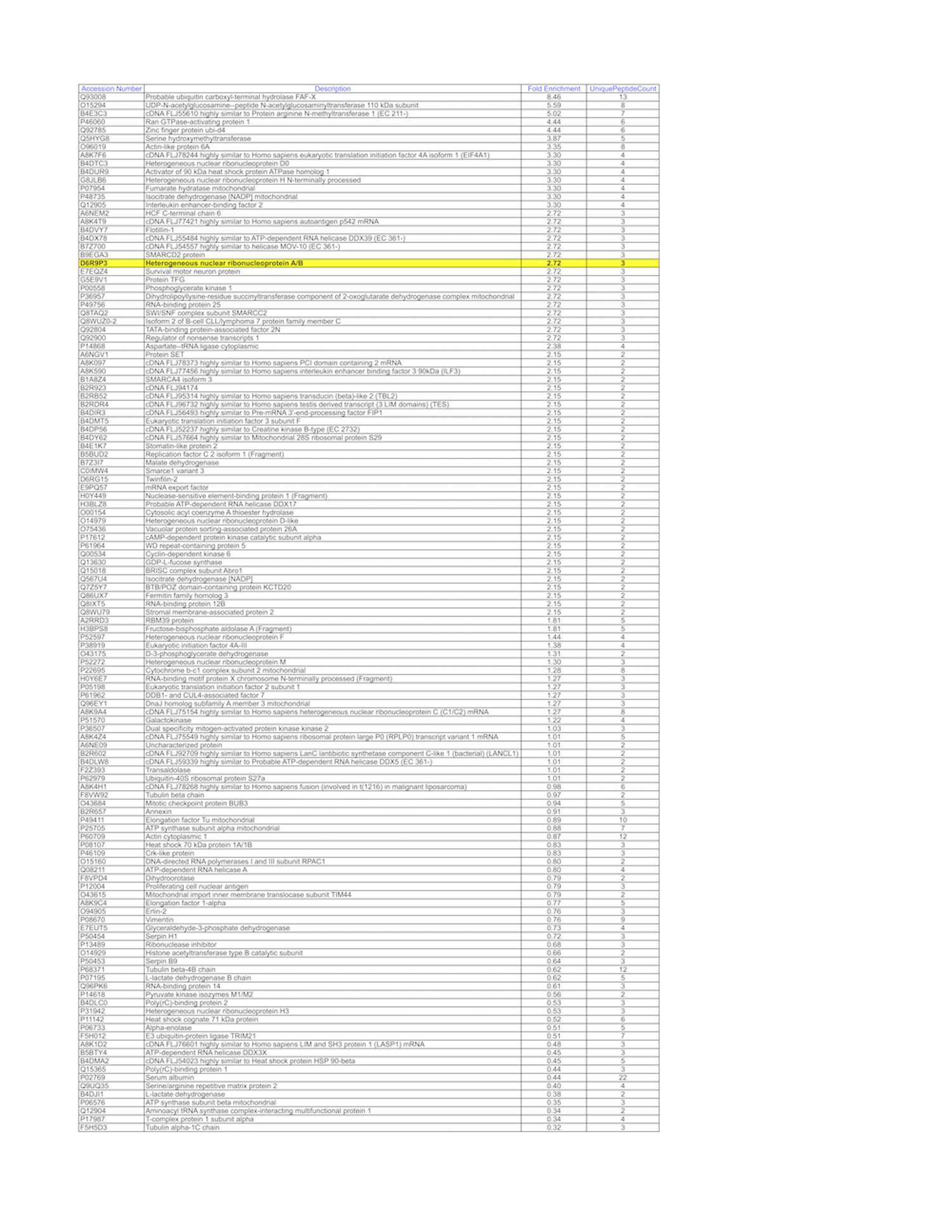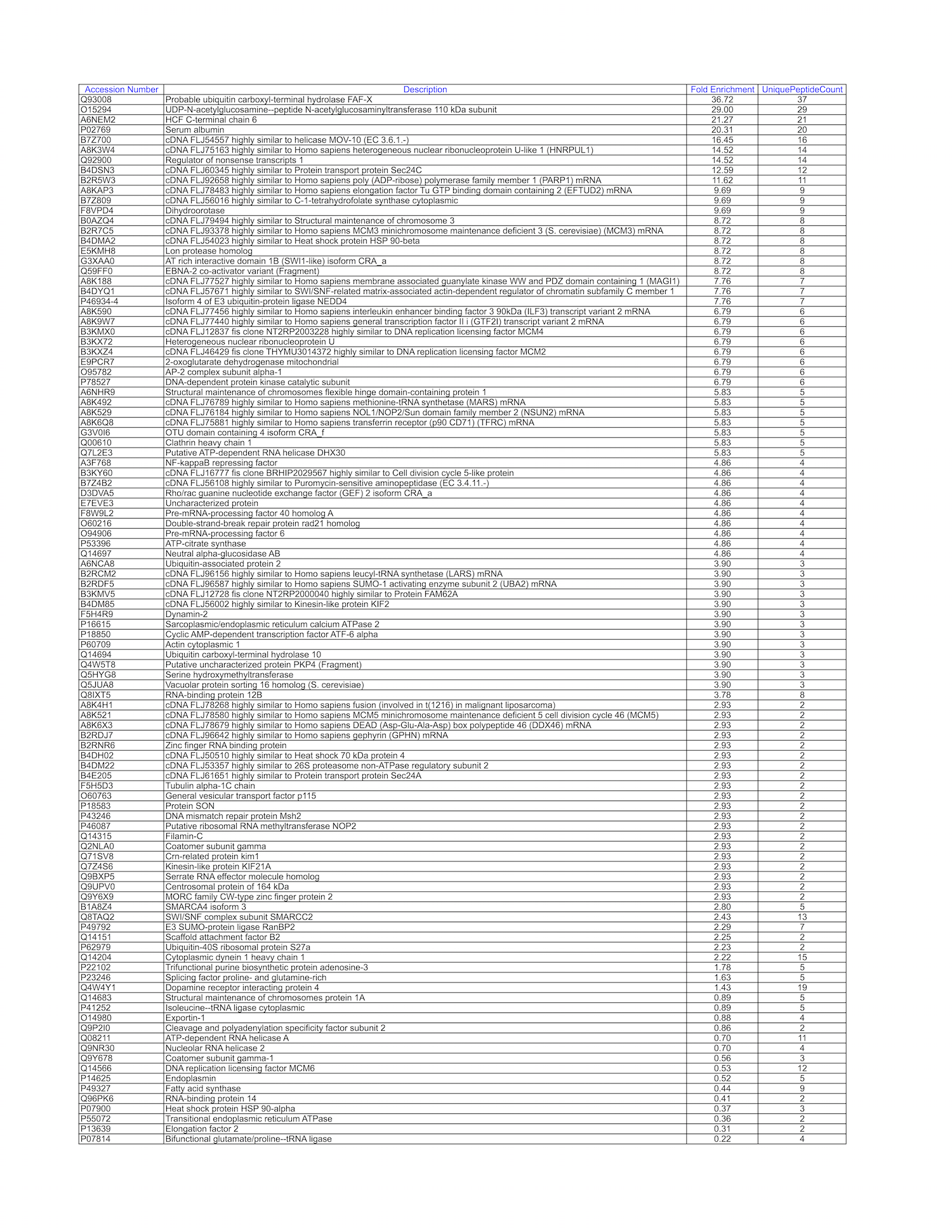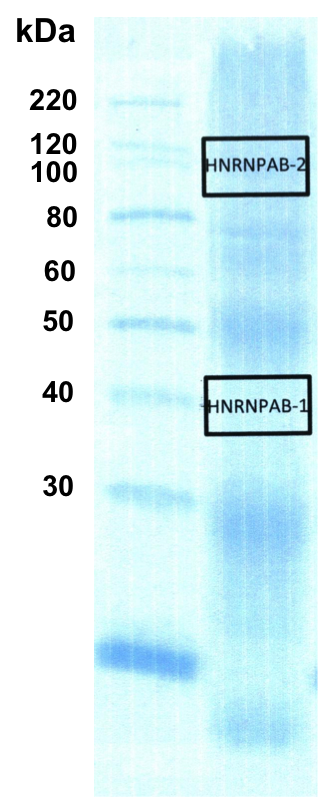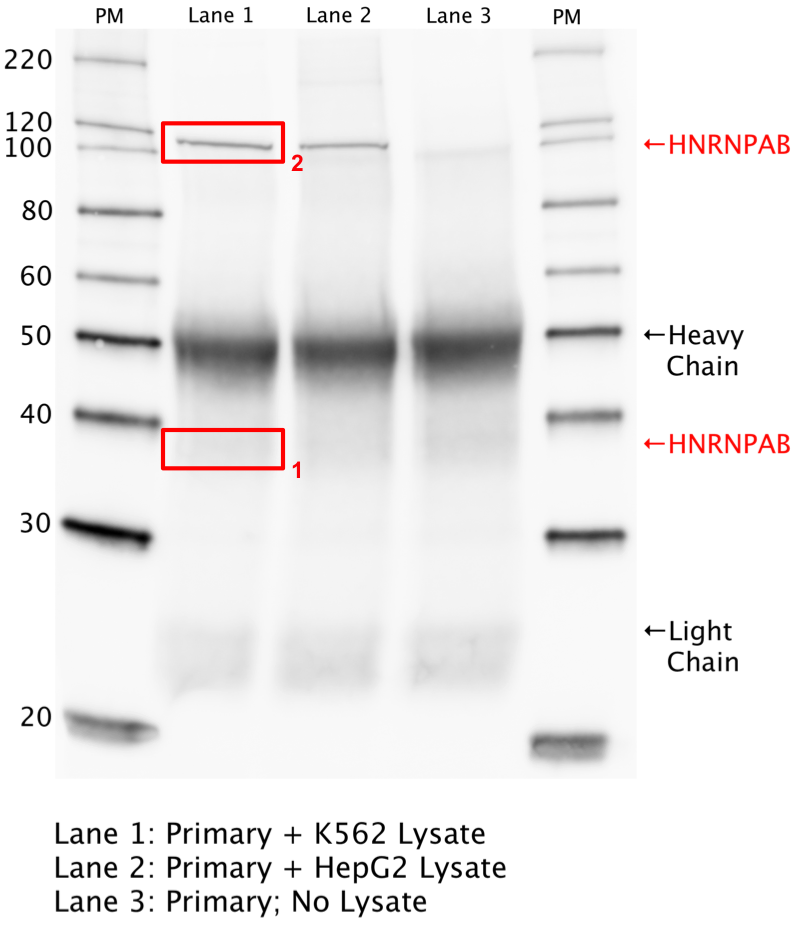ENCAB000AUL
Antibody against Homo sapiens HNRNPAB
Homo sapiens
K562, HepG2
not characterized to standards
- Status
- released
- Source (vendor)
- GeneTex
- Product ID
- GTX101852
- Lot ID
- 39645
- Characterized targets
- HNRNPAB (Homo sapiens)
- Host
- rabbit
- Clonality
- polyclonal
- Isotype
- IgG
- External resources
Characterizations
HNRNPAB (Homo sapiens)
K562
not compliant
- Caption
- IP-WB characterization of HNRNPAB specific antibody in K562 cell line . Lane 1 is 2.5% of five million K562 whole cell lysate Input, lane 2 is 2.5% of supernatant after immunoprecipitation and Lane 3 is 50% of IP enrichment using rabbit polyclonal hnRNPA/B antibody. This antibody did not meet our primary validation criteria using our standard IP protocol in the indicated cell type.
- Reviewer comment
- Not 50% of signal in lane
- Submitted by
- Balaji Sundararaman
- Lab
- Gene Yeo, UCSD
- Grant
- U54HG007005
- Download
- GeneTex_GTX101852_39645_HNRNPAB.png
HNRNPAB (Homo sapiens)
not compliant
- Caption
- Analysis of gel fragment 1 from K562: The sample was analyzed on a LTQ XL Linear Ion Trap Mass Spectrometer by LC-ESI-MS/MS. Peptides were identified using SEQUEST tandem mass spectral analysis with probability based matching at p < 0.05. SEQUEST results were reported with ProteinProphet protXML Viewer (TPP v4.4 JETSTREAM) and filtered for a minimum probability of 0.9. All protein hits that met these criteria were reported, including common contaminants. Fold enrichment for each protein reported was determined using a custom script based on the FC-B score calculation from the reference Mellacheruvu et al., 2013. The CRAPome: a contaminant repository for affinity purification mass spectrometry data. Nat. Methods. 10(8):730-736. Doi:10.1038/nmeth.2557. The target protein, HNRNPAB, was identified as the 21st ranked enriched protein and the 6th ranked transcription factor based on IP-Mass Spectrometry.
- Reviewer comment
- Target of interest is not within the top 20 of the list by fold enrichment
- Submitted by
- Mark Mackiewicz
- Lab
- Richard Myers, HAIB
- Grant
- U54HG006998
- Download
- HNRNPAB-1.png
HNRNPAB (Homo sapiens)
not compliant
- Caption
- Analysis of gel fragment 1 from K562: The sample was analyzed on a LTQ XL Linear Ion Trap Mass Spectrometer by LC-ESI-MS/MS. Peptides were identified using SEQUEST tandem mass spectral analysis with probability based matching at p < 0.05. SEQUEST results were reported with ProteinProphet protXML Viewer (TPP v4.4 JETSTREAM) and filtered for a minimum probability of 0.9. All protein hits that met these criteria were reported, including common contaminants. Fold enrichment for each protein reported was determined using a custom script based on the FC-B score calculation from the reference Mellacheruvu et al., 2013. The CRAPome: a contaminant repository for affinity purification mass spectrometry data. Nat. Methods. 10(8):730-736. Doi:10.1038/nmeth.2557. The target protein, HNRNPAB, was not identified as an enriched protein based on IP-Mass Spectrometry.
- Reviewer comment
- Target of interest is not within the top 20 of the list by fold enrichment
- Submitted by
- Mark Mackiewicz
- Lab
- Richard Myers, HAIB
- Grant
- U54HG006998
- Download
- HNRNPAB-2.png
HNRNPAB (Homo sapiens)
K562
not compliant
- Caption
- K562 whole cell lysate was immunoprecipitated using the primary antibody (GeneTex; GTX101582). The IP fraction was loaded on a 12% Bio-Rad TGX gel and separated with the Bio-Rad Tetra Cell system. A gel fragment (rectangle outline) corresponding to the bands indicated on the Coomassie Blue stained gel image were excised and sent to the University of Alabama at Birmingham Cancer Center Mass Spectrometry/Proteomics Shared Facility.
- Reviewer comment
- Missing IgG controls, band is not 50% of overall signal
- Submitted by
- Mark Mackiewicz
- Lab
- Richard Myers, HAIB
- Grant
- U54HG006998
- Download
- HNRNPAB_IP_MS_WB_1.png
HNRNPAB (Homo sapiens)
K562HepG2
not compliant
- Caption
- Whole cell lysates of K562 and HepG2 were immunoprecipitated using the primary antibody (GeneTex; GTX101582). The IP fraction was separated on a 12% acrylamide gel with the Bio-Rad PROTEAN II xi system. After separation, the samples were transferred to a nitrocellulose membrane with an Invitrogen iBlot system. The membrane was probed with the primary antibody (same as that used for IP) and a secondary HRP-conjugated antibody. The resulting bands were visualized with SuperSignal West Femto Solution (Thermo Scientific). Protein Marker (PM) is labeled in kDa. Two bands were detected at ~37 and ~110 kDa.
- Reviewer comment
- A second band is indicated, no IgG controls
- Submitted by
- Flo Pauli-Behn
- Lab
- Richard Myers, HAIB
- Grant
- U54HG006998
- Download
- HNRNPAB_IP_WB.png
